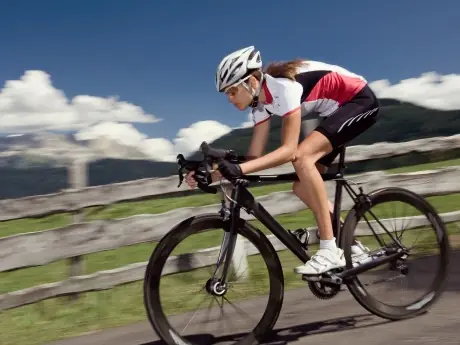Also keep in mind that high-end drivetrains are usually expensive because of the materials used to save the most weight. But we're talking grams here. The second- or third-tier options are usually nearly as good functionally as the most expensive option and sometimes more durable. If you only intend to commute or do some touring, the low end of the spectrum should be sufficient.
Wheels
The wheels are what really drives the price of a bike up. But they are also what make the biggest difference when upgrading the quality of your ride. A lot of bikes are sold with wheels that are either made by the same manufacturer or are a partner of the manufacturer of the bike frame. This helps to drive the overall price down, but can sometimes sacrifice the quality of what you're getting. Good wheels will make a bike faster because of the rotational weight, which is much more complicated than looking at the weight savings of a particular bike frame.
More: Bike Fit: The Wrench Does Not Fix the Machine
If a bike has a wheel set that you don't intend to use or isn't exactly what you're looking for, ask the bike shop if you can swap them out or upgrade. Chances are they have the faster wheels hanging from the ceiling. What type of wheel you choose is again based on preference and what activity you'll be doing. You'll want light wheels if you are doing a lot of climbing, aerodynamic deep-sectioned rims if you're time trialing, or a heavier, sturdy wheel if you'll be using it primarily for training.
Choosing a better wheel than the stock variety usually means that the bearings inside the wheel hubs will be smoother (better rolling resistance) and improve aerodynamics, which is important since what a cyclists is fighting most often is the wind and the road.
More: Finding the Perfect Bike Frame and Dimension
Bike Fit
You'll never know if a bike truly fits you until you spend time riding on it. If you're in the market for a road bike, schedule a time with the bike shop when they'll be available to let you test out a few different bikes. And I don't mean in the parking lot.
Bring your bike gear and take each bike you're considering on a real test ride similar to what you'll be using it for. Chances are that after you put in real miles up real hills on real roads, you'll notice one or two bikes will fit you better than the rest. This should be one of your top criteria when choosing a bike, not the color. An ill-fitting bike is a bike that won't be ridden, and that totals to a lot of wasted money regardless of how cool it looks.
More: Bike Fit Tips from 5 Cycling Experts
For fine-tuning the fitting of a bike, the bike shop should be able to help you out with the following:
- Correct crank length
- Making sure you have a bike with the correct size head tube (taller head tubes if your major criteria is comfort, shorter head tube for lower racing profile)
- Length of stem
- Saddle height, fore and aft positions
- Width of handlebars (in line with the width of you shoulders) and ergonomics of the drops
There are literally a million other things to consider when buying a new road bike—these are just a few tips to consider to help you think about what really is the best bike for you.
More: A Breakdown of Bike Gears
 Ready to ride? Search for a cycling event
Ready to ride? Search for a cycling event- 4
- of
- 4









Discuss This Article